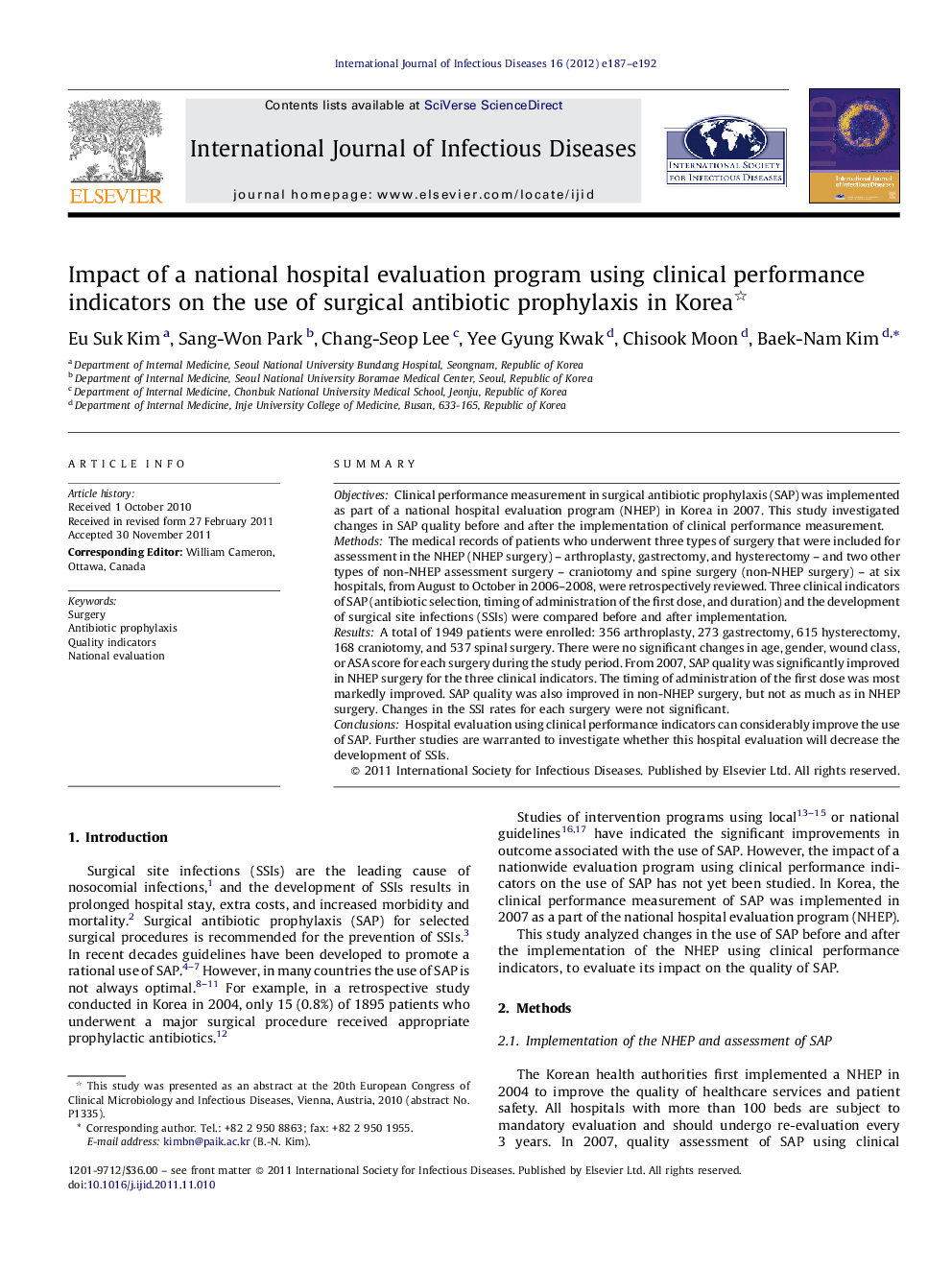| Article ID | Journal | Published Year | Pages | File Type |
|---|---|---|---|---|
| 3363185 | International Journal of Infectious Diseases | 2012 | 6 Pages |
SummaryObjectivesClinical performance measurement in surgical antibiotic prophylaxis (SAP) was implemented as part of a national hospital evaluation program (NHEP) in Korea in 2007. This study investigated changes in SAP quality before and after the implementation of clinical performance measurement.MethodsThe medical records of patients who underwent three types of surgery that were included for assessment in the NHEP (NHEP surgery) – arthroplasty, gastrectomy, and hysterectomy – and two other types of non-NHEP assessment surgery – craniotomy and spine surgery (non-NHEP surgery) – at six hospitals, from August to October in 2006–2008, were retrospectively reviewed. Three clinical indicators of SAP (antibiotic selection, timing of administration of the first dose, and duration) and the development of surgical site infections (SSIs) were compared before and after implementation.ResultsA total of 1949 patients were enrolled: 356 arthroplasty, 273 gastrectomy, 615 hysterectomy, 168 craniotomy, and 537 spinal surgery. There were no significant changes in age, gender, wound class, or ASA score for each surgery during the study period. From 2007, SAP quality was significantly improved in NHEP surgery for the three clinical indicators. The timing of administration of the first dose was most markedly improved. SAP quality was also improved in non-NHEP surgery, but not as much as in NHEP surgery. Changes in the SSI rates for each surgery were not significant.ConclusionsHospital evaluation using clinical performance indicators can considerably improve the use of SAP. Further studies are warranted to investigate whether this hospital evaluation will decrease the development of SSIs.
